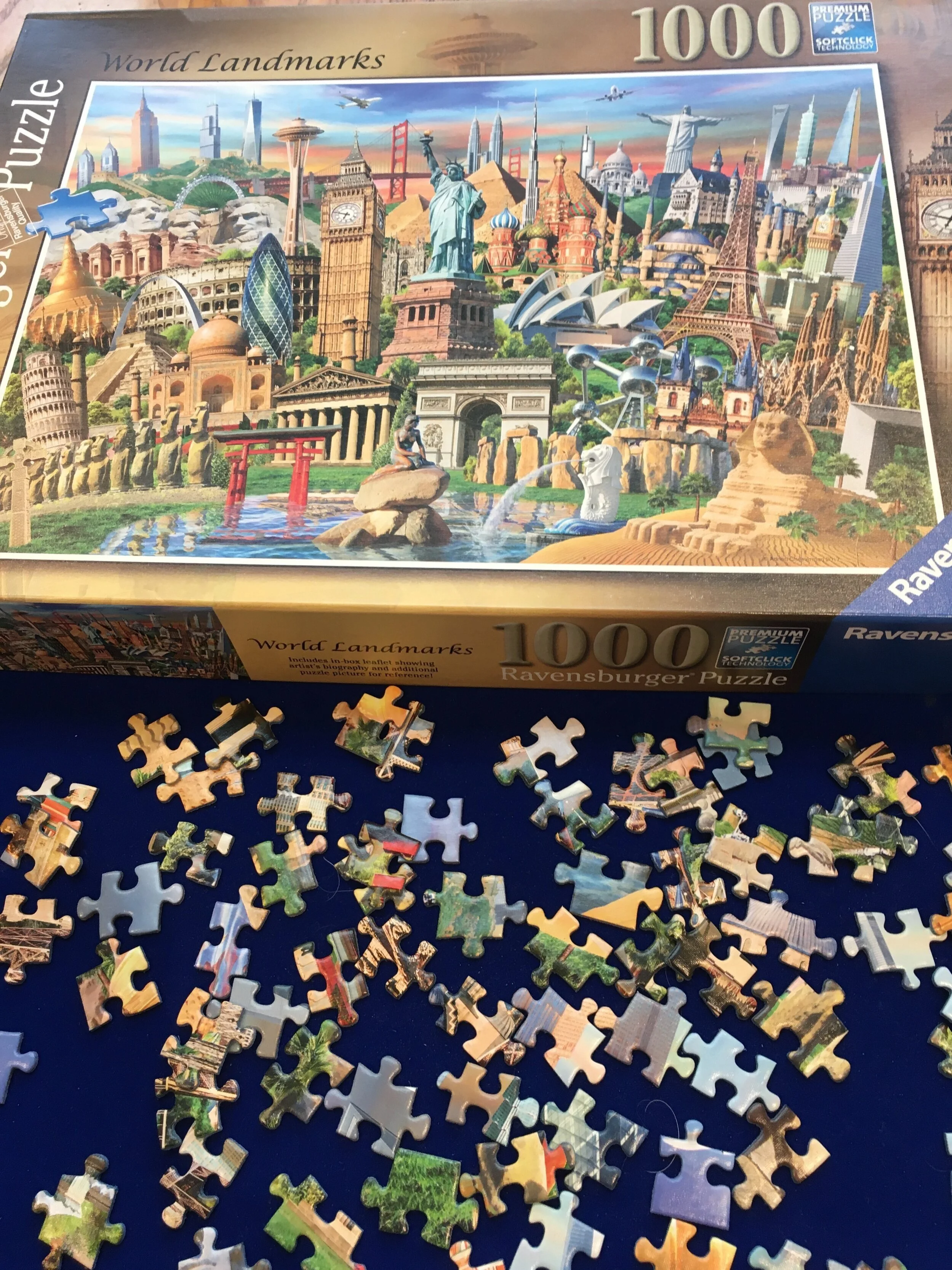How can you help a child who confuses ‘b’ and ‘d’ or hates building Lego from the instructions?
Jigsaws build valuable skills needed for academic learning.
Do a jigsaw with them to help them build skills in visual discrimination, visual perception, planning, reasoning, memory, fine motor and concentration.
This is one of my favourite jigsaws and it feels really special in the current world when all I can do is dream of the places I want to visit and the iconic sights I want to see.
Did you know that doing a jigsaw helps us to build and maintain all sorts of skills that we use for reading, writing and learning as well as giving us a hit of that magical chemical dopamine?
We need to use our visual discrimination skills to find the jigsaw piece we need. This helps handwriting, placing letters on the line or making the ‘h’ taller than the ’t’. We need it to discriminate between letters and numbers that look similar.
Is it a ‘b’ or ‘d’? ‘p’ or ‘q’? ‘6’ or a ‘9’?
We also use it to discriminate between words and signs.
Have you written ‘were’ when you meant to write ‘where’?
Are you seeing the + or the x sign?
Proofreading documents or emails requires us to see the detail and notice the mistakes but we need this skill in everyday life and play too:
Where is that Lego piece you need?
Do you ever look in the kitchen drawer for something and just can’t see it even if it’s right in front of you?
Jigsaws help with our visual-spatial planning and reasoning skills, building problem solving and adaptive skills.
Is it the right shape with the ‘sticky out’ bits and ‘inny’ bits in the right places?
Does it fit if I turn it round?
Is it the right shade of green/red/grey that you are looking for?
Spatial skills are important for academic learning and not just for subjects such as geography. Geometry in maths is an obvious one, but it is also important for place value, algebra and the seemingly simple task of lining up the digits for column addition and subtraction.
We use our visual spatial skills across all subjects to keep our place on the page, copy from the board and in specialist subjects to take a plan or design from the drawing board to creation.
Picking and manipulating the pieces builds the muscles that are vital for developing fine motor skills needed to control the pen and form letters and words. We start with large wooden pieces when children are young and gradually the pieces get smaller and smaller, as the number of pieces increases, and dexterity and finger strength develop.
When you pick up a piece and think about where it goes in the whole picture, or how it goes with other pieces already placed, you are giving your memory a workout; strengthening neural connections, improving mental speed and thought processes.
There are rewards too.
When we place a piece in the right place we get hit of dopamine, boosting our mood and increasing optimism. When it’s a struggle and frustrating we build resilience. Doing a jigsaw with others builds collaboration and communication.
The concentration builds our concentration ‘muscle’ and the Alpha brainwaves promote calm and a feeling of relaxation. Taking a break to work on a jigsaw can reset your brain so you return to your task refreshed and productivity improves. It can be regarded as a form of mindfulness - emptying your thinking mind and providing a beneficial pause in a busy day or escape from anxious times. Sitting with a jigsaw and a cup of tea is one of my favourite ways to break up my day and return to my desk refreshed.

